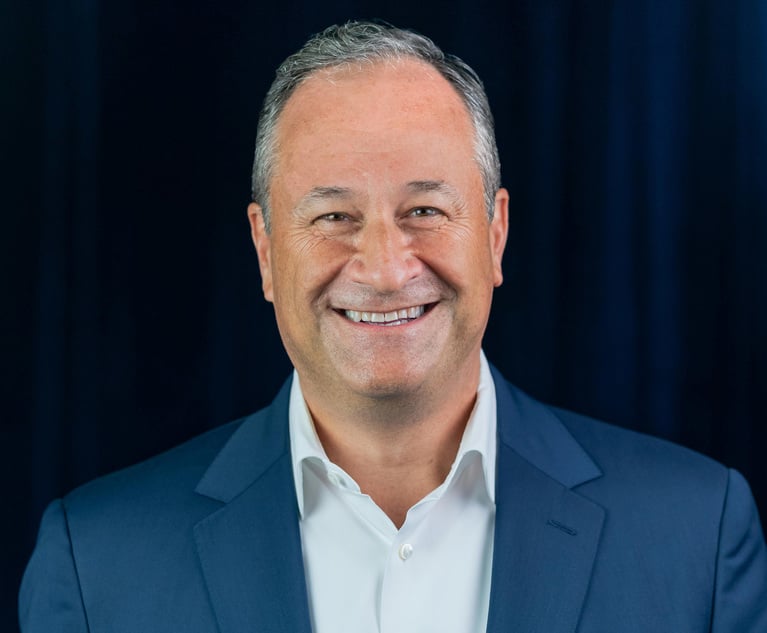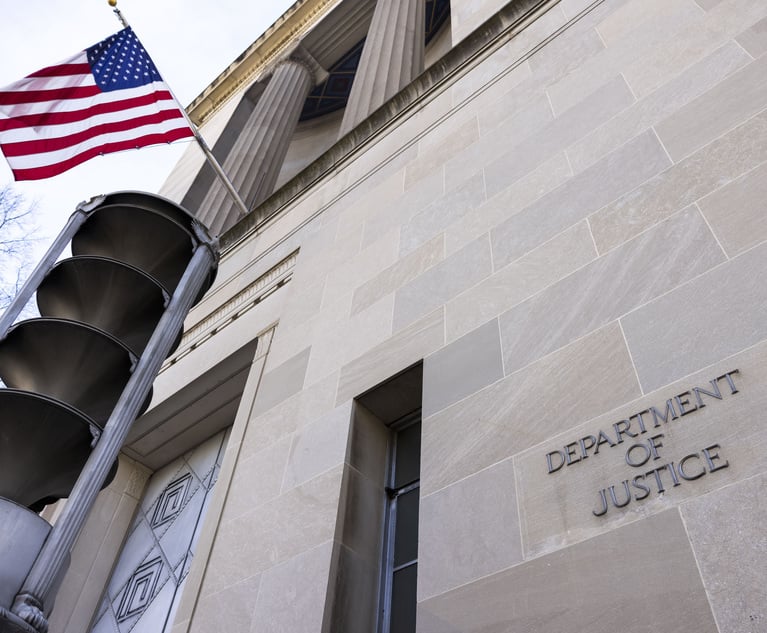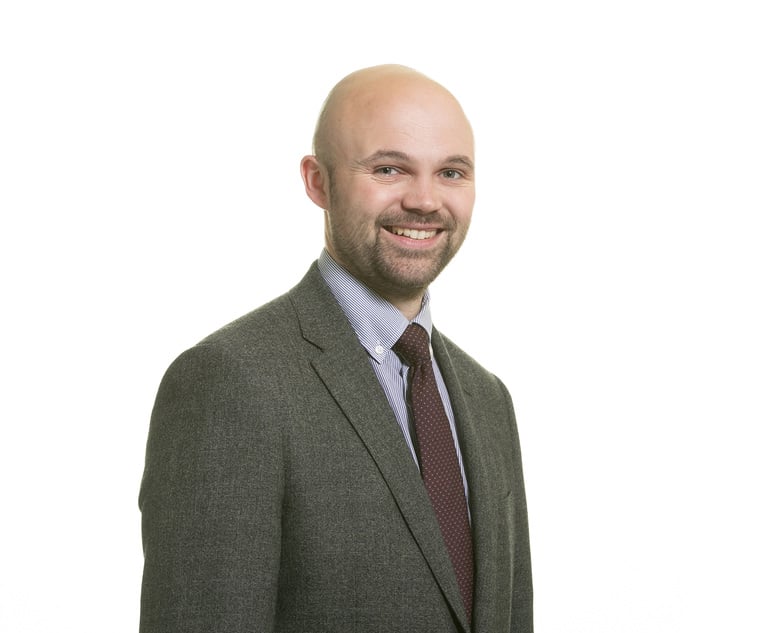Busy Merger Market Shows No Signs of Slowing
After two record-breaking years, merger activity is expected to stay high in the new year.
December 26, 2018 at 06:50 PM
4 minute read

As their smaller peers have been coupling up in record-breaking numbers, large and midsize law firms in the United States have mostly been sitting on the sidelines.
Expect that to change in 2019.
Several substantial combinations took place over the past year. Bryan Cave's trans-Atlantic tie-up with Berwin Leighton Paisner created a 1,600-lawyer superfirm. Three hefty mergers in Texas—Foley & Lardner and Gardere Wynne Sewell; Hunton & Williams and Andrews Kurth Kenyon; and Clark Hill and Strasburger Price—helped build and define the buzz around the Lone Star State. Fox Rothschild and Nelson Mullins Riley & Scarborough both bolstered their presence in the Southeast through deals with firms of roughly 150 lawyers.
These deals hint at a growing trend in the marketplace, says Lisa Smith, who heads the Washington, D.C., office of consultancy Fairfax Associates.
“When you look at some of the largest mergers in 2017, taking out cross-border deals, they tended to skew a little lower in size than what you're seeing now,” she explains. “I think we're seeing more interest in the firms that are in the 200-to-500-lawyer range, reaching combinations with similar-sized and larger firms.”
As 2018 came to a close, it was on pace to become the busiest year ever for law firm mergers, surpassing a record set in 2017.
“I can't remember a time when we've been asked to conduct more merger assessments—for deals that are already on the table,” Altman Weil principal Eric Seeger says.
But most of these completed U.S. mergers have involved the acquisition of smaller firms with no more than 20 lawyers. Those firms have grown more willing to consider a merger. Some have even initiated discussions themselves to seize opportunities to expand and serve clients more effectively, or as an exit plan for founders and senior attorneys.
Much of this activity has entailed tie-ups of neighboring firms.
“It's easy to understand who the other firm is, who their clients are and whether it's a good fit when you've been living next to each other. Obviously it makes you friends and collaborators rather than enemies and competitors. The client conflicts are easy to figure out,” Seeger says. “And the economics tend to be the same, because firms are already operating in the same market.”
The bigger deals are harder to pull off, but firms are generally in a stronger position to do so, having dealt with overcapacity and underperformance issues.
And for those firms looking to stretch into new territory, Texas will remain a top destination, along with Northern California and Washington, D.C. But merger fatigue may be kicking in for some.
“There are firms that are getting approached once a week, but there are only so many coffees that you can have,” Smith says. “The firms [for which] it really made sense to merge, they've already done it.”
Don't rule out the prospect of a groundbreaking global merger, either. All eyes are on Allen & Overy and O'Melveny & Myers. At the very least, count on global firms like Dentons and DLA Piper to continue expanding their footprints.
And with the U.S. economy expected to continue growing into 2020, there's no reason to expect the merger boom to end. More importantly, quality is rising along with quantity.
“Law firms are run much more effectively than they used to be, and firms are doing a better job of assessing the strategic, financial and cultural fit of a potential merger partner,” Seeger notes. “As a result, we're not just seeing more mergers, but better mergers.”
This content has been archived. It is available through our partners, LexisNexis® and Bloomberg Law.
To view this content, please continue to their sites.
Not a Lexis Subscriber?
Subscribe Now
Not a Bloomberg Law Subscriber?
Subscribe Now
NOT FOR REPRINT
© 2025 ALM Global, LLC, All Rights Reserved. Request academic re-use from www.copyright.com. All other uses, submit a request to [email protected]. For more information visit Asset & Logo Licensing.
You Might Like
View All
Treasury GC Returns to Davis Polk to Co-Chair White-Collar Defense and Investigations Practice
2 minute read

Government Attorneys Face Reassignment, Rescinded Job Offers in First Days of Trump Administration
4 minute read
Trending Stories
- 1Starbucks Hands New CLO Hefty Raise, Says He Fosters 'Environment of Courage and Joy'
- 2Blockchain’s Fourth and Fifth Amendment Privacy Paradoxes
- 3Prior Written Notice: Calabrese v. City of Albany
- 4Learning From Experience: The Best and Worst of Years Past
- 5Treasury GC Returns to Davis Polk to Co-Chair White-Collar Defense and Investigations Practice
Who Got The Work
J. Brugh Lower of Gibbons has entered an appearance for industrial equipment supplier Devco Corporation in a pending trademark infringement lawsuit. The suit, accusing the defendant of selling knock-off Graco products, was filed Dec. 18 in New Jersey District Court by Rivkin Radler on behalf of Graco Inc. and Graco Minnesota. The case, assigned to U.S. District Judge Zahid N. Quraishi, is 3:24-cv-11294, Graco Inc. et al v. Devco Corporation.
Who Got The Work
Rebecca Maller-Stein and Kent A. Yalowitz of Arnold & Porter Kaye Scholer have entered their appearances for Hanaco Venture Capital and its executives, Lior Prosor and David Frankel, in a pending securities lawsuit. The action, filed on Dec. 24 in New York Southern District Court by Zell, Aron & Co. on behalf of Goldeneye Advisors, accuses the defendants of negligently and fraudulently managing the plaintiff's $1 million investment. The case, assigned to U.S. District Judge Vernon S. Broderick, is 1:24-cv-09918, Goldeneye Advisors, LLC v. Hanaco Venture Capital, Ltd. et al.
Who Got The Work
Attorneys from A&O Shearman has stepped in as defense counsel for Toronto-Dominion Bank and other defendants in a pending securities class action. The suit, filed Dec. 11 in New York Southern District Court by Bleichmar Fonti & Auld, accuses the defendants of concealing the bank's 'pervasive' deficiencies in regards to its compliance with the Bank Secrecy Act and the quality of its anti-money laundering controls. The case, assigned to U.S. District Judge Arun Subramanian, is 1:24-cv-09445, Gonzalez v. The Toronto-Dominion Bank et al.
Who Got The Work
Crown Castle International, a Pennsylvania company providing shared communications infrastructure, has turned to Luke D. Wolf of Gordon Rees Scully Mansukhani to fend off a pending breach-of-contract lawsuit. The court action, filed Nov. 25 in Michigan Eastern District Court by Hooper Hathaway PC on behalf of The Town Residences LLC, accuses Crown Castle of failing to transfer approximately $30,000 in utility payments from T-Mobile in breach of a roof-top lease and assignment agreement. The case, assigned to U.S. District Judge Susan K. Declercq, is 2:24-cv-13131, The Town Residences LLC v. T-Mobile US, Inc. et al.
Who Got The Work
Wilfred P. Coronato and Daniel M. Schwartz of McCarter & English have stepped in as defense counsel to Electrolux Home Products Inc. in a pending product liability lawsuit. The court action, filed Nov. 26 in New York Eastern District Court by Poulos Lopiccolo PC and Nagel Rice LLP on behalf of David Stern, alleges that the defendant's refrigerators’ drawers and shelving repeatedly break and fall apart within months after purchase. The case, assigned to U.S. District Judge Joan M. Azrack, is 2:24-cv-08204, Stern v. Electrolux Home Products, Inc.
Featured Firms
Law Offices of Gary Martin Hays & Associates, P.C.
(470) 294-1674
Law Offices of Mark E. Salomone
(857) 444-6468
Smith & Hassler
(713) 739-1250










